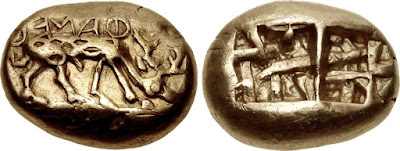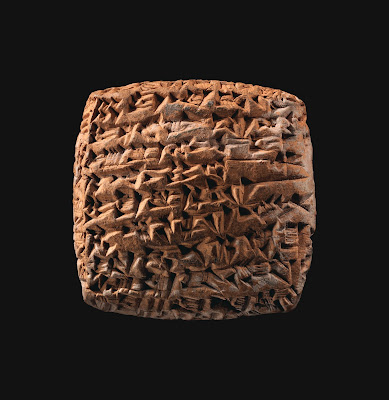We tend to dismiss chain letters as mere scams or frauds. In this post I want to get readers thinking about chain letters as a type of financial innovation, one that has been steadily updated over the decades.
Chain letters are lists. Players own a spot on that list. That list is governed by a rule: the first people on the list are to be paid by the latecomers. The chain letter stop working, or paying out, when no one else wants to join up.
The amount of money flowing to early-birds who joined the list is equal to the amount arriving from latecomers. No additional value gets created. That's why chain letters are zero-sum games.
The greatest technological strength of a chain letter is its decentralization. Each node, or participant, is independently responsible for receiving, copying, updating, distributing, and marketing the chain letter. Without a central schemer to indict, it's almost impossible for the authorities to stop the letter from propagating. Think of chain letters as the honey badgers of the financial world: tough, indestructible, and durable.
One of the most famous chain letters was the Circle of Gold letter. It reportedly started out in San Francisco and ripped through the rest of the U.S. in 1978. Here's how it worked:
In brief, I'd buy a copy of the Circle of Gold letter from you for $50 cash, and then mail $50 to the name at the top of the list, for a total outlay of $100. I'd then make two copies (removing the name at the top of the list an inserting my own at the bottom) and sell each for $50 to friends/family, for a total of $100, thus breaking even. The buyers in turn made copies and sold them on, the chain continuing. At some point my name would arrive at the top of the list and the money would begin to arrive in my mailbox.
Law enforcement declared the Circle of Gold letter to be illegal. But there was little they could actually do to stop it.
Chain letters like Circle of Gold may be difficult to eradicate, but they suffer from two big problems. I'll explain each of these problems, and also show how they were eventually fixed.
If decentralization is a chain letter's greatest strength, it is also the root cause of its main weakness. A buyer of a Circle of Gold letter had an incentive to break the rules by sneaking their name to the top of the list. Without a centralized administrator, there is no one who can prevent players from cheating.
This is the first weakness of chain letters. We'll call it the dishonesty problem. The dishonesty problem undermines a chain letter's credibility. If everyone knows that cheating will be rampant, they won't bother getting involved at all. Thus the odds of a letter widely propagating is going to be quite low.
To help make a chain letter more transmissible, what is needed is some sort of procedure that solves the dishonesty problem while preserving decentralization.
Enter Mega$Nets.
Mega$Nets was an ingenious 1990s-era chain letter that relied on software to prevent cheating. Here's how it worked:
• I buy a $20 Mega$Nets disk $20 from you
• After booting up the software I'd be asked to input my name and address, which was now locked into the program
• Before I could make copies of the disk, I had to mail $20 in cash to five others above me on the list. Once the $20 was received, these people would mail a code back to me.
• Only after I had entered the codes into the software could I duplicate the disk and sell it for $20. If the chain grew and my name worked up the list, I'd eventually start receiving a stream of $20 payments in the mail.
Mega$Nets software prevented names and addresses from being erased, thus preserving the list order. Importantly, it solved the dishonesty problem without compromising the decentralized nature of a chain letter. After all, Mega$Nets software ran independently on each individual machine, not from a central server.
| Source: Donald Watrous's chain letter links |
If Mega$Nets solved the dishonesty problem of chain letters, it didn't
stay around very long. Eventually a programmer hacked Mega$Nets and
figured out how to cheat the system. To undermine trust in the chain
letter, he published his crack to the internet so that others could download it.
Now let's get to the second major weakness of traditional chain letters. Even if a chain letter manages to solve the dishonesty problem, it still suffers from another big weakness: lack of fungibility.
Fungibility is the idea that all members of a population are perfectly interchangeable with each other. Rice is fungible because one grain of rice is pretty much identical to another. My Tesla shares are fungible with yours. Dollar bills are fungible.
But positions in a chain letter like Mega$Nets are not fungible. A spot at the top of a chain is more valuable than a spot further down. And a spot on branch A of the Mega$Nets chain may have a different value than a spot at an equivalent height on branch B of Mega$Nets.
This lack of fungibility impinges on a players' ability to sell their spot in the chain letter to someone else. With every position in a chain letter being radically different, it's a huge chore for potential buyers to evaluate the market value of any single spot. And so a healthy resale market for chain letter spots can never develop.
Why would we want to be able to sell out of a chain letter? One of the big attractions of buying stocks, ETFs, bonds, gold, or currency is that we can resell these instruments, maybe two minutes later, maybe two decades later. If we are locked into an investment forever, we probably wouldn't want to invest very much in the first place. Likewise with chain letters. If a spot in a chain letter can be easily resold at a later time, then making an initial investment in the chain letter becomes a much more attractive proposition.
But is it possible to design a fungible chain letter? And if so, can we also solve the honesty problem while preserving decentralization? It sounds impossible.
Enter bitcoin, the world's first honest & fungible chain letter.
The novelty with bitcoin is that there is a fixed number of spots in the list.* New players can only join by purchasing a pre-existing position in the chain.**
This approach is different from a more traditional chain letter like Mega$Nets or Circle of Gold. With Mega$Nets, the list is dynamic, not static. The number of spots in the list starts out small and expands organically as people join up, append their name, and generate a new spot in line. No need to buy someone's position out. Just add your own. New spots, however, are subservient to old spots
But Bitcoin software creates all spots on the list ahead of time, so no spot is superior or inferior to the others unlike . All bitcoin positions are fungible from the get-go.
As with every other chain letter, players "win" at Bitcoin by being early. The difference is that with bitcoin, winning is achieved by being one of the first to buy up a spot in a fixed non-hierarchical list. With a traditional chain letter like Mega$Nets, winning is achieved by creating one of the first entries in a hierarchical list that lengthens over time. Either way, the earlier one arrives, and the more latecomers who join up down the road, the richer one gets.
Because every single spot on the bitcoin list is fungible, buyers can easily appraise the worth of any single bitcoin (i.e. chain letter spot). And so a robust secondary market for bitcoins has developed where early bitcoin players fluidly auction off their positions to newer players. This marketability is one of the things that has turned bitcoin into such an incredibly contagious chain letter.
Bitcoin doesn't just solve the fungibility problem. It also fixes the dishonesty problem. Bitcoin software ensures that it is impossible for anyone to conjure up a new spot on the bitcoin list, or re-arrange the distribution of existing spots. (Some people describe this as solving the double-spending problem of electronic cash, but in this blog post it is the honesty problem of chain letters that is being fixed).
Finally, bitcoin achieves all this while being just as decentralized as its chain letter predecessors.
Bitcoin is decentralized because individual participants can buy and sell bitcoin (i.e. spots in the list) in bilateral pairwise meetings. No need to rely on a central planner to distribute funds from late entrants to early birds. Secondly, much like Mega$Nets software, bitcoin software is deployed on thousands of computers all over the world. No central server. So like its traditional chain letter predecessors, bitcoin is very difficult for the authorities to attack.
In conclusion...
At first blush bitcoin seems like an entirely novel financial technology. But as I suggested in my post, it's just a meaner & badder version of chain letters like Circle of Gold and Mega$nets.
What is revolutionary about bitcoin is how it has modified the chain letter model in order to solve the dishonesty and fungibility problems. Until bitcoin arrived in 2009, we had never seen the full capabilities of chain letters. Sure, chain letters regularly popped up, but they never lasted for more than a year or two. They were niche financial games played by odd people. Upstanding folks didn't touch them.
By solving the two problems of chain letters, bitcoin has radically dialed up the contagion factor for chain letter technology to a degree never experienced before. Bitcoin has become the first chain letter to go mainstream. It is the first chain letter to go global. Your sister is playing, your cousins are in, and so is your neighbour. Old-fashioned chain letters were for folks on the fringe. But playing bitcoin is something that regular people do. The abnormal ones are those who haven't yet secured a spot in line.
*Bitcoin has a 21 million cap. These 21 million coins were not created at inception. However, the protocol sets out the rules for their creation ahead of time.
** Players can also join by "mining" bitcoins. Mining is one of the processes that updates & secures the chain letter. Computers that engage in mining are rewarded with new bitcoins and/or a small fee out of the existing stock of bitcoins.




